Search Results for Tag: Russia
Finland courts US rivals Russia and China in bid for key role in Arctic power game

China has its own Arctic research station on Svalbard. (Pic. I.Quaile)
Finland does not often make its way onto the international news agenda, but as the country prepares to take over the presidency of the Arctic council from the USA next month, it succeeded twice over the past week. Firstly, the country’s President offered to host a meeting between Russian President Putin and US President Trump. Then Chinese President Xi Jinping flew in on a state visit on his way to a meeting with Trump.
Tackling the summit
At a forum in the northern Russian city of Arkhangelsk last Thursday entitled “The Arctic: Territory of Dialogue”, Finland said it was willing to host a high-level summit meeting during its two-year presidency and would be happy to receive the Russian and US Presidents in Finland.
In his statement, the Finnish leader stressed that “the geopolitical tensions in other parts of the world should not be allowed to spill over to the Arctic. Cool heads are needed to keep the Arctic an area of low tensions also in the future.”
Under the chairmanship slogan “Exploring Common Solutions”, he said “we want to highlight the need for constructive cooperation between all Arctic stakeholders. Also, we believe it is time to take the Arctic cooperation to a new level. Finland proposes the convening of an Arctic Summit to discuss a wide range of issues pertaining to the region and beyond. This would provide an opportunity to ensure that the Arctic indeed remains a territory of dialogue”.
Heather Exner-Pirot, Managing Editor of the Arctic Yearbook, was scathing about the Finnish move in a blog post for Eye on the Arctic. She says Finland has been floating the idea of such a summit at least since 2010.
“But after meeting with Barack Obama in May 2016, Niniistö seemed to abandon such plans, calling the timing “inappropriate” given the international political situation. That was short-lived. Niniistö once again revived the idea in his first telephone call with now President Trump, in December 2016.”

Go for the summit or work from base camp? (Greenland, Pic. I.Quaile)
Stick to base camp?
Exner-Pirot finds it “bewildering” that the current situation could be considered more appropriate than they were a year ago.
“Niniistö may not have noticed, but the Trump Presidency is in crisis, a political dumpster fire, not least because it is under investigation for inappropriate ties to Russia during its 2016 Presidential campaign. Any meeting of Trump and Putin under the current political climate would be a circus.”
She says Finland has not put forward any convincing reasons to host such a Summit, and that the usual biannual Arctic Council Ministerial, which will take place next month, is an adequate regular platform to address high level Arctic issues amongst the Arctic states’ Foreign Ministers.
“The Trump Administration has proffered no position on Arctic affairs except, tangentially, to cast doubt on the anthropogenic contributions to climate change; it is hard to imagine more sophisticated or constructive discussions arising from an Arctic Summit.”
She argues for continuing “compartmentalization” as a guiding principle in regional Arctic politics, keeping environmental issues and development “insulated from the destabilising fluctuations that occur within the broader international system.”
Cooperation with Russia is “rational and necessary”, Exner-Pirot concludes, but “inviting Trump and Putin together for an Arctic Summit flagrantly violates this strategy. Instead, it invites drama and uncertainty into Arctic politics at a time when multilateral efforts are progressing quite smoothly; an all-risk-and-no-reward scenario. This is not the Arctic way. Cooperation with Russia in the Arctic must continue. But the proposal for an Arctic Summit should be shelved.”

Easier access necessitates close cooperation to cope with more traffic in the High North (I.Quaile)
Nice try?
While there is much to be said for tackling issues at lower levels – can you blame Finland for making the most of its central role at the helm of the Arctic Council? It is surely natural for a country in this position to offer a stage for a high-profile meeting of these two world leaders – perhaps especially when it seems unlikely in the present circumstances.
At any rate, it will only happen if the two key players feel it could be to their advantage. The very prospect certainly ensured considerable news and public attention for the incomimg Arctic Council Presidency.
Finnish President Sauli Niinisto back-pedaled a little later, saying the nation was unlikely to hold an Arctic summit at short notice, cooling media excitement at the prospect of an early meeting between US President Trump and Putin.
For his part, President Putin said he was willing to meet Trump in Finland, but “he would wait longer if needed”, the news agency AP reported: “We are waiting for the situation to normalize and become more stable. And we aren’t interfering in any way.”
With a US congressional investigation of possible links between the Trump election campaign and Russia underway, the jury, presumably, can said to be “still out” on that one.
Ultimately, insulating the Arctic from the tensions of international politics as Exner-Pirot suggests, seems like wishful thinking.
There is evidence enough that Russia has been moving to increase its military presence in the region. In a feature for Reuters published January 30th, Andrew Osborn wrote Russia was “again on the march in the Arctic and building new nuclear icebreakers.”
Osborn describes this as “part of a push to firm Moscow’s hand in the High North as it vies for dominance with traditional rivals Canada, the United States and Norway as well as newcomer China.”

The Chinese lion is claiming its space in the Arctic. (Svalbard, Pic. I.Quaile)
Based on interviews with officials and military analysts and reviews of government documents, Osborn concludes that Russia’s build-up is the biggest since the fall of the Soviet Union and that it will “in some areas, give Moscow more military capabilities than the Soviet Union once had.”
He continues “under President Vladimir Putin, Moscow is rushing to re-open abandoned soviet military, air and radar bases on remote Arctic islands and to build new ones, as it pushes ahead with a claim to almost half a million square miles of the Arctic.”
The article was written after a tour of the Lenin, a Russian icebreaker now functioning as a museum in Murmansk. This week that name popped up again in a story in the Barents Observer by Thomas Nilsen entitled “FSB fears terror at nuclear installations in Murmansk region”.
The topic was on the agenda at a conference on board that same museum icebreaker in Murmansk the day after the metro attack in St. Petersburg.
The conference was entitled “Improving antiterrorist protection of civilian and military nuclear power facilities, preventing acts of nuclear terrorism”.
Nilsen points out that there are few places in the world with more operational nuclear reactors than the Murmansk region.
So is there a link between the Arctic and possible terrorist attacks by “Islamic State”, suspected by Moscow of being behind the St. Petersburg attacks?
Nilsen quotes Oleg Gerasin, head of the Russian intelligence bureau FSB in Murmansk region, explaining that ships from Russia’s Northern Fleet have been taking part in “antiterrorist operations in Syria.”
This demonstrates once more the inter-connectedness of the world today. With all due respect for essential multilateral cooperation on a wide range of issues at lower levels, across the board, ultimately the nature of politics in a globalized world can necessitate participation at the highest leadership level and lend symbolic significance to top-level summits. And that can apply especially if they can be brought about in times of strained relations and global risks.

The view from above can be useful (Greenland, Pic. I.Quaile)
Chinese ties
This week also saw Chinese leader Xi Jinping pay a visit to Helsinki, on the way to his tensely awaited meeting with US President Trump. This was only the second ever visit to Finland by a Chinese leader, although Xi himself visited in 2010 when he was vice-president. Niinistö made an official visit to China in 2013 .
Finland opened political ties with China in 1950 and Chinese state media were keen to stress that Finland was the first western country to sign a governmental bilateral trade agreement with Beijing.
Xi said in a statement there was “great potential” for future bilateral trade ties. He stressed that “over the past 67 years of diplomatic ties, the China-Finland relationship has enjoyed steady and sound growth despite the changing international landscape”. China is Finland’s fifth largest trading partner and Xi said he saw “great space and potential for further economic cooperation and trade”.
During the visit, Finland became the latest to benefit from what the news agency AFT describes as “Beijings famed panda diplomacy”. A pair of giant pandas will be leased to Ahtari zoo in central Finland, where a new panda cage costing more than eight million euros is being constructed.
So while President Trump warned talks with Xi would be “very difficult” – the US deficit with China rose to 31.7 billion $US in February – Finland was stepping up its game, cultivating non-Arctic nation China. China has observer status at the Arctic Council and a strong economic interest in making use of shorter sea routes from Asia to Europe and the USA through the Arctic, with climate change making access easier, although relatively high transit costs and unpredictable ice cover still limit its attractiveness. Beijing is keen to gain footholds in a region it sees as key for the future.
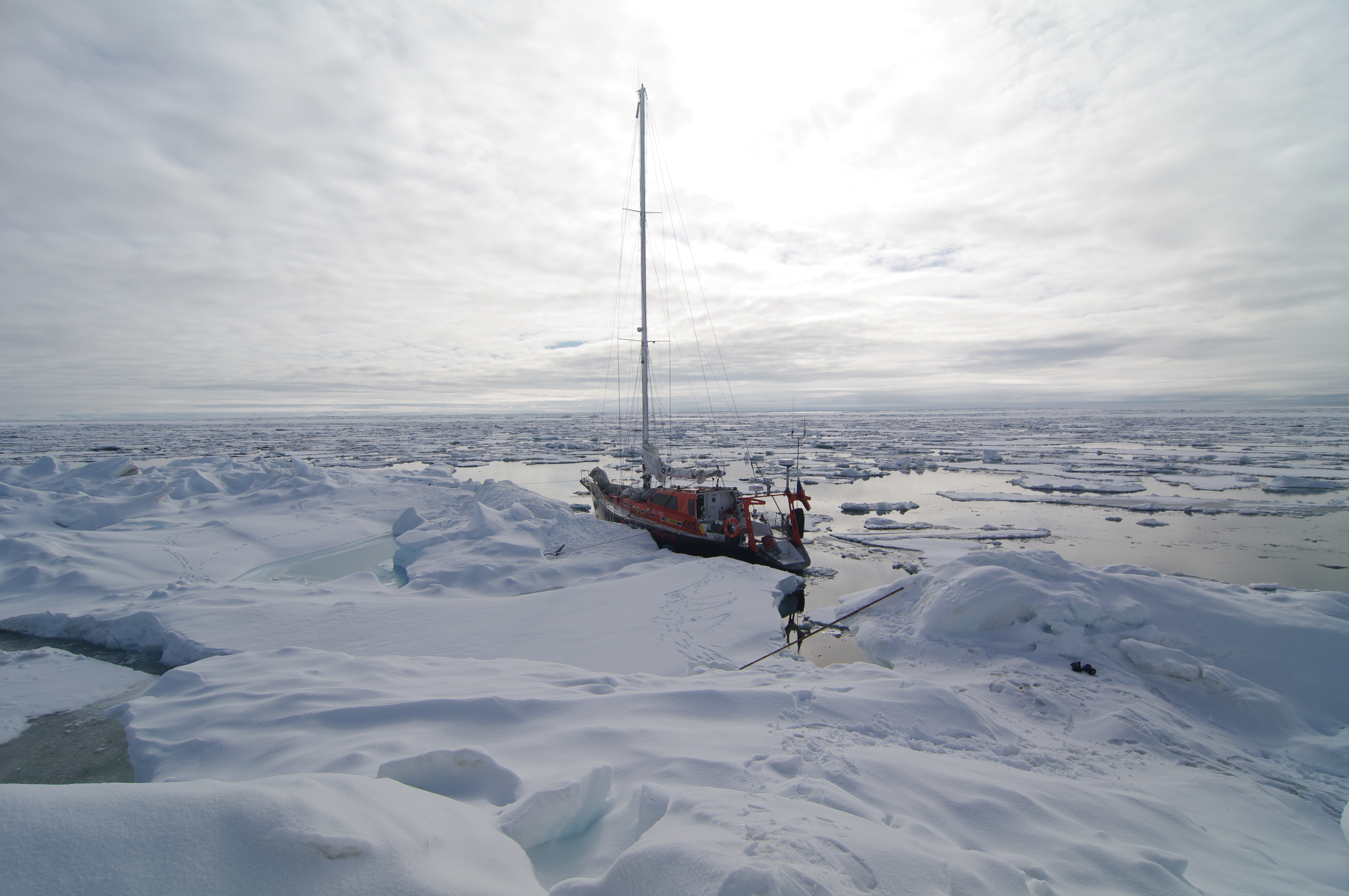
The Russian Peter 1 was the first sailing boat to cross the North Pole unaided in 2010 http://www.rusarc.ru/
China is starting to build its own icebreakers. New icebreakers could allow year-round navigation in the 2020s, Grigory Stratiy, deputy governor of Murmansk Region told Reuters.
China is leading a “Belt and Road Initiative” (BRI), a $5trillion plan to upgrade infrastructure between Asia and Europe. So far, Russia is the only one of the eight Arctic nation states to be a BRI partner. China, which has partnered heavily with Iceland in recent years, is keen to get the Nordic nations on board.
In the statement issued after the visit, China and Finland stressed two key over-arching issues:
“Both sides are committed to working together to reduce or limit greenhouse gas emissions, promote sustainable development and strengthen climate change adaptation and mitigation efforts.”
The two partners “shared the view that economic activities in the Arctic area should take into full consideration the protection and sustainable use of its natural resources. The two countries will intensify economic and technological cooperation in the fields of arctic marine industry, arctic geology, marine and polar research (including polar weather and sea ice monitoring and forecast), environmental protection technology, shipping and maritime safety, including vessel monitoring and reporting, ICT and tourism.”
A wide-ranging and ambitious spectrum.
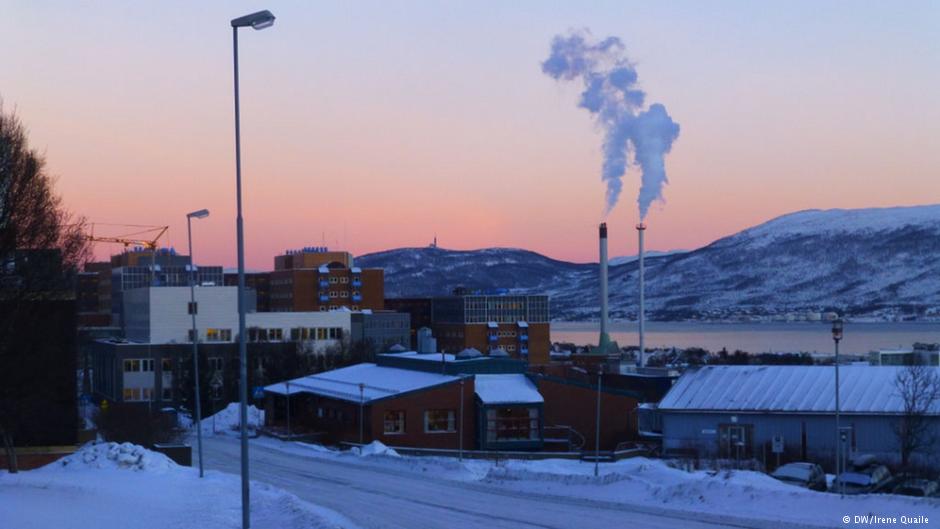
Get rid of those emissions (Arctic Tromsö, Pic. I.Quaile)
Meanwhile, on the global climate action stage, China seems set to benefit from the backward-looking policies of the Trump administration, positioning itself as a new world leader. At home pollution, drought and desertification are causing increasing problems for Beijing. To ensure peace and food security and avert unrest, a switch to renewable energies is essential. Beijing has also recognized their economic potential. At the same time the country can polish up its international image by taking on the role of climate leader while Donald Trump advances to environment and climate public enemy number one.
While it leads the global move to halt climate change, China is positioning itself to exploit the impacts global warming has already had on the Arctic. Given the current state of the global climate and the slow progress towards keeping to the two-degree let alone 1.5 degree upper limit for global warming, the Arctic is unlikely to re-freeze in the near future. Full speed ahead for Arctic development?
The Arctic Council has to be the body that controls what is happening in the High North and coordinates protection of the fragile Arctic environment.
As President of the body for the next two years, Finland has the opportunity – and the responsibility – to make its influence felt.
As far as the first meeting between the Russian and US-American “big men” is concerned, Finland just might have to pass. Finnish leader Niinistö had to admit to a news conference:
“The G20 meeting in Germany will likely be the first meeting for presidents Trump and Putin”, (July 7 and 8.)
Watch this space.
Arctic Council: business as usual with USA under Trump?
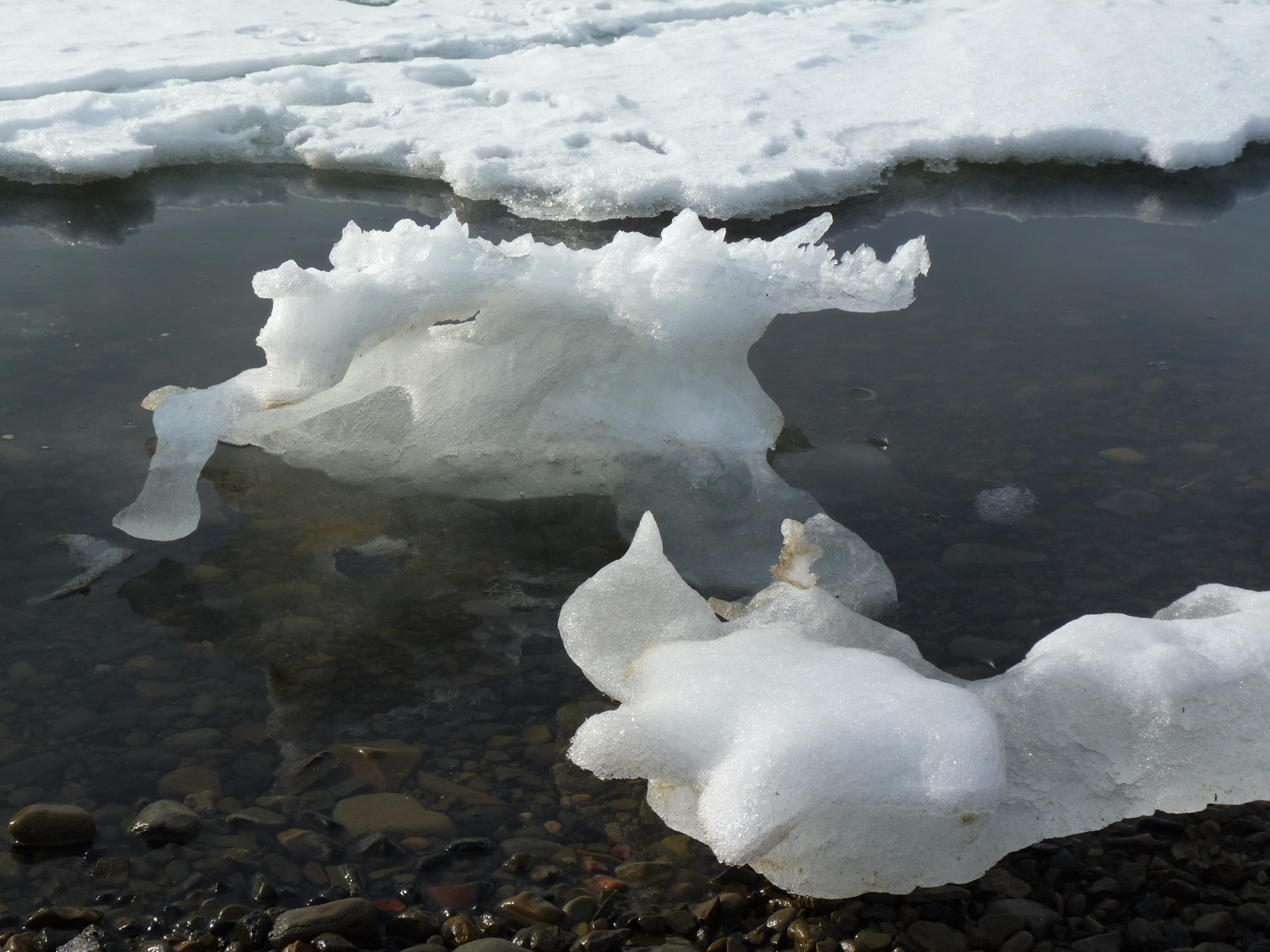
Dwindling sea ice (Pic: I.Quaile)
As the USA comes to the end of its two-year Chairmanship of the Arctic Council, the organization’s “Senior Arctic Officials” met in Juneau, Alaska, last week to prepare for a final ministerial meeting in Fairbanks in May 11th, before Finland takes over the chair. US Ambassador David Balton is currently Chair of the SAO. At a press briefing in Juneau on Friday, it comes as no surprise that one of the questions that interested journalists most was how US Arctic policy might change under the Trump administration and whether that was already happening.
Climate skeptics at the helm?
Given that the Arctic is one of the regions of the globe being affected most rapidly and dramatically by climate change, it does not seem unrealistic to imagine that the climate skeptical views of President Trump and some of his key advisors will have more than just a little impact on the high north.
President Trump’s environment chief Scott Pruitt recently hit the headlines when he again denied that global warming is caused by fossil fuel emissions. The incoming head of the key Environmental Protection Agency (EPA) told the American television channel CNBC he “would not agree” that carbon dioxide from human activity was the primary cause of global warming.
When Pruitt was attorney general in Oklahoma, he helped sue the EPA 14 times. He told CNBC that “tremendous disagreement” remained over human impact on the climate and said the Paris accord amounted to a “bad deal.”
When the foreign ministers of the eight Arctic Council states get together in May, it is US Secretary of State Rex Tillerson, former CEO of the energy giant EXXON, who should be the man in the chair. One of the three priorities of the US chairmanship has been climate change. An interesting combination. So will the ex fossil fuels chief be there?
“We have recommended to Secretary Tillerson that he attend the Arctic Council Ministerial. He is the Chair of the Council. We don’t have a decision yet, as Secretaries of State are busy people. But the last three times the Arctic Council met at the ministerial level, a US secretary of state attended. So it’s my hope that he will come. Certainly the government and people of Alaska would like him to be here.”
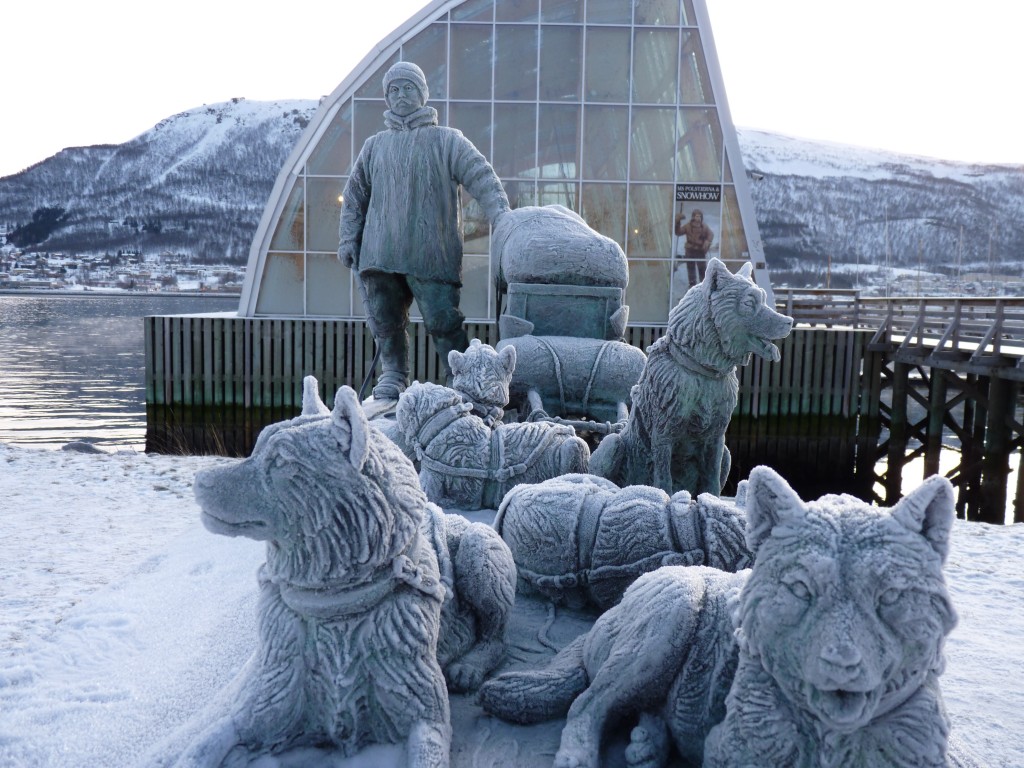
Polar exploration – close to the Arctic Council secretariat in Tromsö, Norway (Pic. I.Quaile)
Continuity or change of direction?
Drastic budget cuts affecting climate and environment and changes in personnel at the State Department and elsewhere in the administration were also on the agenda at the Juneau briefing (which was joined online by journalists around the world). So how is this affecting the work of the Arctic Council?
“So far I see no direct effect on participation in the Arctic Council either in the lead-up to our own ministerial or beyond, but the picture is not entirely clear yet,” said Balton.
“So far”, and “not yet” seem to be key words.
When it comes to whether and if so how US participation in the Arctic Council and US goals and priorities relating to the Council and to the Arctic have changed or may change under the Trump administration, Balton expressed optimism about continuity:
“I have been working on Arctic issues for the US government for the best part of 20 years. And what I can say is that US interests in the Arctic and our goals and objectives for the Arctic have not changed appreciably over time. There was a first statement of US Arctic policy issued during the Presidency of Bill Clinton. It laid out 6 basic goals of our nation in the Arctic. When George W. Bush became our President, they reiterated those very same goals, in the context of another Arctic policy statement that was put out. And when Barack Obama became President there was a question of whether the Bush administration policy would stand. And it did. It was reaffirmed during the Obama administration. And we built on top of the policy something known as the national strategy for the Arctic region. What all these documents have in common is more important than what separates them.”
Balton did accept that there had been changes of emphasis, but not in the fundamental view.
“The real interests of the United States in the Arctic have very much to do with the state of Alaska and its needs and interests, and keeping the Arctic a peaceful stable place is certainly a non-partisan issue in the United States.”

Frozen waves at Barrow, Alaska. (Pic: I.Quaile)
America first in the Arctic?
Presumably, as long as this fits with President Trump’s “America first” policy, all will be well. The question is how that plays out when other major Arctic players put the interests of their own countries first.
“One Arctic” was the overall theme of the US Chairmanship over the last two years. But when it comes to reconciling the geopolitical not to mention economic interests of Arctic states, cooperation might just become a little more tricky.
In September 2016, the International Security Advisory Board (ISAB), a Federal Advisory Committee established to provide the Department of State with a “continuing source of independent insight, advice, and innovation on scientific, military, diplomatic, political, and public diplomacy aspects of arms control, disarmament, international security, and nonproliferation” published a “Report on Arctic Policy” in response to a request to “undertake a study of Russia’s interests, intentions, and capabilities as it has been increasing its presence – both military and civilian – in the Arctic.”
Interesting times ahead.
The wind of change?
So far, the new administration has not turned its attention to the Arctic in particular, Balton told the journalists:
“There have been signals about climate change policy, but even those are not – at least not to me – clear yet. We do know that the Finns intend to highlight the Paris Agreement as part of their chairmanship program, but they have many other aspects they hope to highlight as well, including the sustainable development goals that the United Nations has announced.”
It remains to be seen whether the Trump administration will keep to the Paris Agreement or not. And when it comes to sustainable development in the Arctic, clearly changes in the climate will play a key role.
Between now and the end of the US Chairmanship of the Arctic Council in May, it looks as if Balton and his team will be able to carry on with “business as usual”.
“So the US Arctic Council Programme was developed in the last administration, and is just coming to fruition now. Of course we are in touch with the new administration, which I’m a member of, and for the most part now our guidance is to keep doing what we’re doing. That could change between now and May, but I don’t actually expect it will.”
The question will be what happens after that.
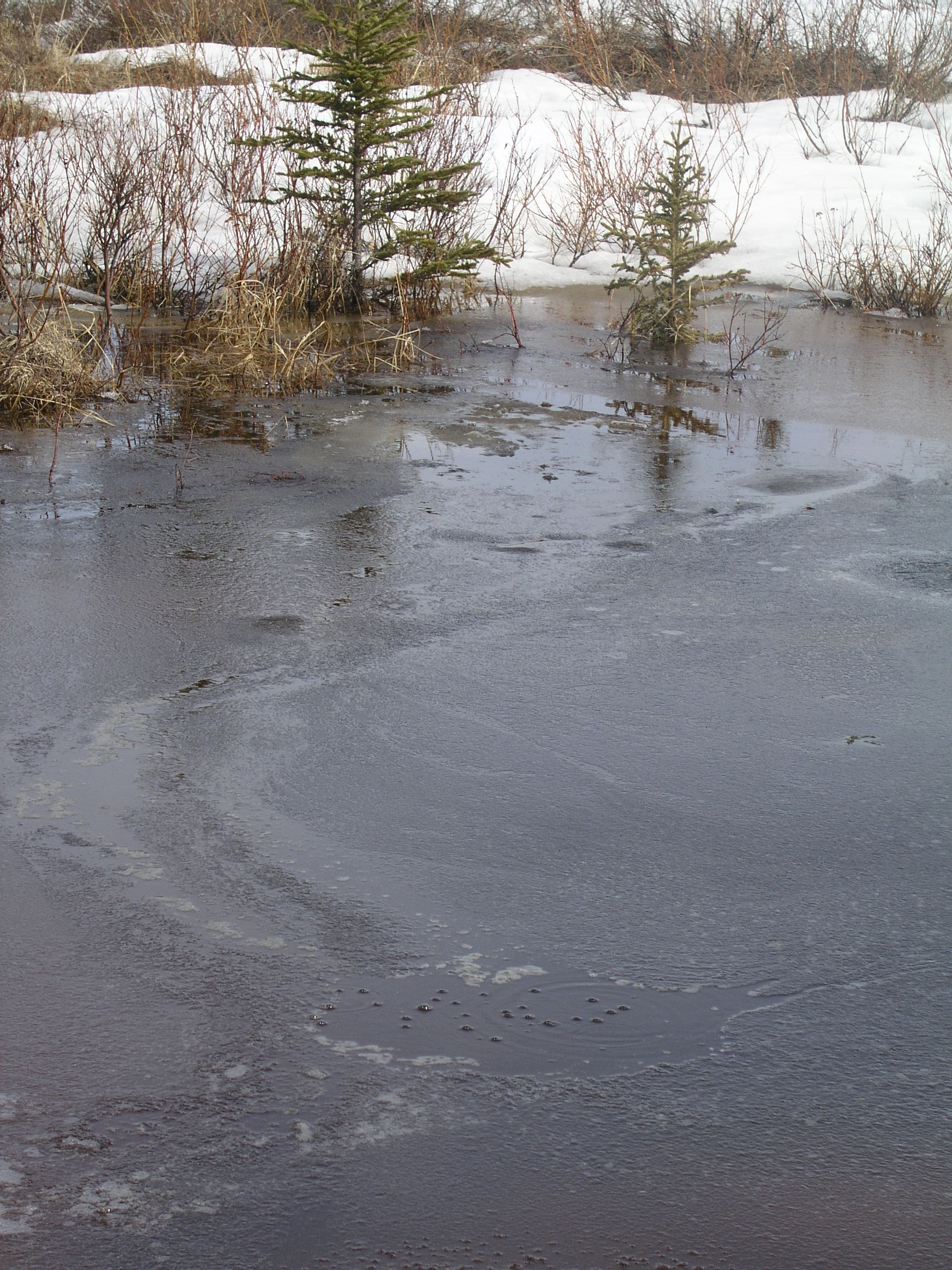
Methane bubbles escape from melting permafrost lake in Alaska (Pic. I.Quaile)
Long-term strategy
The Arctic Council has committed to developing a long-term strategic plan. “One of the things I felt strongly about when the US took over was that we needed to get the Council as a whole to be thinking in more than two-year increments”, Balton said. “Many of the issues concerning the Arctic are longer term. And the Council must find a way to think in longer-term. So that will happen. I expect two years from now we will be finalizing the long-term strategic plan for delivery to ministers in 2019, and probably look ahead at least ten years. “
So what effect will the change of US administration have on that? Some of the journalists listening to the briefing seemed skeptical about the idea that nothing appears to have changed, although the new new administration has hugely different policies. Again, this could well be just a matter of time:
“I think it’s fair to say that there has been no fundamental change in the way that the US is participating in the AC yet. This administration like past administrations may wish to put its own stamp on US Arctic policy. That may occur at some point. But it has not happened yet.”
Monitoring a rapidly changing Arctic
In response to a question about ocean acidification, the US ambassador described the increase in ocean acidification by 30% worldwide as “staggering” and said it was quite clearly caused by CO2 emissions.
There are not enough platforms in the Arctic to monitor this fully, he said, describing it as “one of our ambitions” to change that.
That brings us back to the crucial role played by US bodies, especially the National Oceanic and Atmospheric Administration (NOAA) and the National Aeronautics and Space Administration (NASA) in monitoring the planet.
Today, more than thirty leading Florida scientists published an open letter to President Trump, coming out strongly against White House’s proposed cuts to the earth sciences programs at NASA and NOAA. They call on the President to recognize climate change and resulting sea level rise, which is, of course, of existential importance to Florida in particular.
Concern is mounting in the scientific community that the new administration will try to silence efforts to educate the public on climate change.
Christina DeConcini, Director of Government Affairs at the World Resources Institute, whom I interviewed recently about the Trump administration’s climate and environment policies, said in a statement on today’s letter:
“The proposed budget cuts are an affront to the integrity of science and a large body of crucial work on the impacts of climate change that increasingly damage the United States. As the most vulnerable U.S. state to sea level rise, Floridians know this very well; it persistently threatens their infrastructure, communities and homes.
“Research from NOAA and NASA is foundational for assessing and effectively responding to disruptive flooding and costly extreme weather damages.”

Satellite data is revolutionizing our knowledge of ice. (Pic. I.Quaile, Tromso)
Science first
In the letter, the scientists write:
“American scientists have historically been at the forefront of scientific discoveries and innovation. America should invest heavily in our effort to understand our homeplanet and be aware of how physical changes will impact industry and society.”
They make a powerful plea for continuing support for NOAA and NASA:
“NASA and NOAA Earth science programs monitor and understand changes in our water resources and our soil. They track the conditions that affect the food and medicines we get from the oceans. These conditions impact agriculture, our military, businesses, and major industries. It is imperative to support programs that explore our planet – at NOAA and NASA and across the government. The work of NOAA and NASA is vital to life on Earth and must be continued”, the scientists write.
“NASA and NOAA’s work capture the history and the present state of the oceans, land, fresh water bodies, and atmosphere. They make it possible for us to observe changes to the planet we live on, from the vantage point of space.
For example, NASA satellites are responsible for providing the first global measurements of aerosols in our atmosphere and for understanding ozone. NASA satellites from the GRACE and ICES missions discovered unexpected rapid changes in Earth’s great ice sheets (…)”
So there we have it. Ultimately, the work of the Arctic Council cannot be separated from the issue of climate change and scientific monitoring.
Perhaps it was fortunate that the US Presidency of the Arctic Council coincided with the Obama period in office, where some decisions were taken in the interests of the region.
It will be up to Finland to direct operations for the next two years, from May onwards. But, clearly, regardless of what happens in the Arctic Council, the overall policy of the new US administration will have a key impact on what happens in the Arctic.
The latest SWIPA, (Snow, Water, Ice and Permafrost in the Arctic) report on the cryosphere will be presented to the ministerial gathering in May. It is unlikely to make happy reading. Climate change will have to be a major factor. And given the Trump administration’s policies so far on that issue, the work of the Arctic Council will not be able to carry on regardless.
Arctic off limits for giant trawlers?
This past winter, one of the favourite fish dishes being served up here in Germany was skrei, or Arctic cod. I had the feeling this was a new trend in this part of the world, and found myself wondering why there seemed to be more about and whether this could have anything to do with climate change and easier access to fish stocks which were further north before.
My research brought me very quickly to a campaign by Greenpeace, which is tackling this very issue. The website describes the increase in large-scale fishing as a “new threat” to the Arctic:
“Investigations by Greenpeace have shown industrial fishing fleets using destructive bottom trawling are invading previously pristine areas of the Barents Sea in the Norwegian Arctic.”
Greenpeace carried out an investigation focused on part of the Norwegian Barents Sea, including an analysis of vessel movements over three years to September 2015. I called up Frida Bengtsson in Norway, a Greenpeace campaigner and author of the report on the investigation, just published in March, entitled “This Far, no Further. Fishing in the Arctic.”
She told me what she and her fellow conservationists had found out and why they are worried:
“What we’ve seen over the years is that the cod fishery that comes from Norway and provides markets in Europe and also travels to China, North and Latin America, has been expanding further north. So our research shows we are moving further and further north and into the Arctic. These areas have previously been covered by sea ice. Up to half the sea ice cover in the Barents Sea has disappeared since the 1980s”.
Given that the sea ice is disappearing anyway, I wondered whether it wasn’t a natural thing to catch some of the fish in the region:
“Research has just started to look at what’s below the sea ice on the seabed, and we’ve found things they haven’t found in other parts of the Barents Sea where extensive fishing has taken place for longer periods of time. For example, they have found sea pens, up to fifty years of age and up to two metres in height, which is very unique. So we’re calling for a precautionary approach, to not expand into these vulnerable areas but leave them alone and replace the protection the ice once offered with regulation.”
So in fact the problem is not the catching of a limited number of fish, but the effect of the large-scale industry on other species:
“We look at the size of the Barents Sea fishery. It’s very big. There are over 200 factory trawlers licensed to fish in the Barents Sea, and the footprint on the ocean environment is very large. We’re concerned that if this fishery is allowed to move into areas that haven’t been fished before, it will have a very negative impact. We’re mostly concerned about bottom trawling, where you use heavy trawl doors that can weigh several hundred kilos to put the net out and then drag it along the seabed with chains. The creatures on the seabed are very vulnerable and soft, and when they’re hit by these massive trawls they are destroyed.”
I asked what kind of preventive measures Bengtsson and her colleages would like to see?
“We think industry should move out of this area now, and we want to see Norway step up and protect these areas. We think that’s in line with what people generally want when it comes to Arctic protection. It would also mean Norway would meet their commitment towards the 2020 goals the world has set on protecting the world’s oceans.”
Alongside Norway, another major player in the region is Russia. I wondered if Greenpeace was also targeting Russian fishing?
“The Barents Sea fishery is shared between Norway and Russia. But most of the fishing activity actually takes place inside Norway. So we believe that working with the Russian fisheries, the markets that they sell to and the Norwegian government, we will find the right balance. But of course it’s also going to be important to see protection happening all over these vulnerable areas. And the Russians have already acknowledged the vulnerability for their part and have noted these as sensitive areas.
So far, the organization says it has had some interesting reactions both from consumers and the fishing industry to its report:
“It is very clear that people don’t consider that trawling for cod in the Arctic is something that is sustainable. And I think for the industry, it’s important to be at the forefront of sustainability. The indications we have from industry suggest they think it’s important and they want to take preventive measures. That is very encouraging, because I think it’s always good when we can work together. At the moment we’re seeing industry taking initiatives to find some solutions. That is interesting because it’s in line with the same pattern we’ve seen in other places, for example around the soya moratorium in Brazil. There, industry agreed to take preventive measures, to not expand soya production into the Amazon.”
Of course all this relies on pressure from consumers, using their purchasing power to make fishing companies do certain things, like stay out of certain areas. But can ordinary people find out fish is coming from an area of the Arctic it should not be coming from? Not so easy, it seems:
“Unfortunately, today that is very difficult for a consumer. But even so, it’s very important that you ask the question. If more and more consumers start asking where their fish comes from, that will lead to better labeling. We have seen initiatives in Europe where some fish is labeled, with catching area and the fishing boat, but of course that’s only a very small share. We would like to see that happening with the whole of the seafood market”.
Plenty of food for thought there, for anyone who eats fish as well as the industry that brings it from the ocean to the table.
Arctic fish and chips? Listen to my interview with Frida Bengtsson.
Trudeau and Obama’s Arctic Endeavours
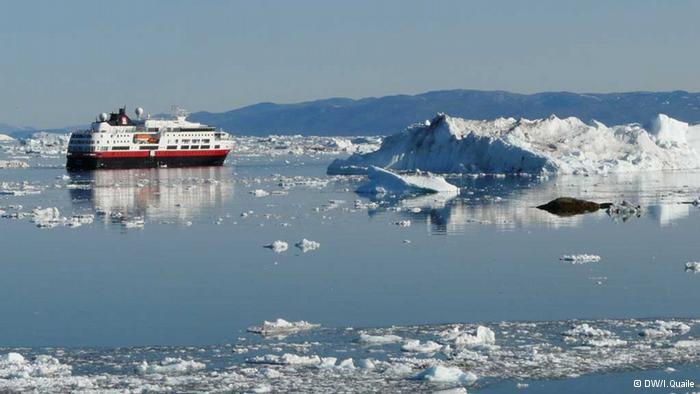
Obama and Trudeau want to protect the Arctic against climate change and harmful development (Pic: I.Quaile
Sometimes there are pleasant surprises to end the week. An announcement by the US and Canadian leaders that they are joining forces to take measures to protect the Arctic would come into that category.
Given the US role as a top emitter and Canada’s extremely negative position on climate action under the old Harper government, this seems to me a very important announcement. Obama, unfortunately, is on his way out. Trudeau, we know, has just come in.
I was interviewing Frida Bengtsson from Greenpeace on the phone this morning about a campaign to keep industrial fishing out of the Arctic. I asked her how she judged the announcement. This was her response:
“I think it shows some good, clear leadership on Arctic protection. Now it’s up to the implementation. We’re hoping they will set the bar really high on protection and that fishing will be included and that areas of the Arctic will be off limits to any industrial activity, including oil and gas.”
As always, the proof of the pudding is in the eating.
In the background, the two countries have pledged to sign the Paris climate deal “as soon as feasible”. Hm. That sounds a little wishy-washy to me. But they also say they want to improve cooperation on energy issues. If it means cutting emissions rather than building something like the Keystone XL crude oil pipeline to bring heavy Canadian oil to the US, it’s extremely good news for the climate. Obama rejected the project last year. It was promoted by Trudeau’s predecessor, Stephen Harper.
Canada and the USA have now committed to cut emissions of methane by 40 to 50 percent below 2012 levels by 2025. Given that methane is around 20 times more powerful than CO2 as a greenhouse gas, that is an important step. The oil and gas industry is the single largest source of methane emissions in the US and globally. Obama and Trudeau also announced they plan steps to fight climate change in the Arctic, and to speed development of green technologies.
The US Environmental Protection Agency, EPA is to start developing regulations for methane emissions from existing oil and gas sources immediately and “move as expeditiously as possible to complete this process”. Obama has made extensive use of the EPA during his time in office, in his attempt to combat opposition to his pro-environment and climate moves from Republicans.
Last month the US Supreme Court ruled to delay the implementation of Obama’s Clean Power Plan to fight emissions from power plants. But the President says the plan to cut methane emissions is on secure legal grounds.
In the Arctic, the countries agreed to set standards on shipping, fishing and oil and gas exploration and development, and to base decisions on scientific evidence. Development is only to occur “when the highest safety and environmental standards are met”.
In the Washington Post, mark Brownstein, vice president of climate and energy at the Environmental Defense Fund, said the proposed cut in methane emissions would be like “closing a third of the world’s coal plants”.
“This is arguably the single biggest, most impactful, most immediate thing we can do to slow the rate of warming right now”, Brownstein said.
Obama and Trudeau pledged to safeguard the Arctic with initiatives to protect more than 10 percent of the marine areas, designate shipping corridors with low environmental impact, and establish new offshore oil and gas leasing plans.
Clearly, both governments are recognizing the Arctic as a priority. Of course full Arctic protection requires action by other Arctic nations, like Russia, Denmark and Norway.
Increasing industrial activity in the Arctic brings an increased risk of potential collisions, oil spills, pollution, black carbon and underwater noise to disturb wildlife.
This joint announcement is a clear demonstration of how much political leadership can do when it comes to climate issues,and just how important is to have people in power who understand what drives climate change and why it is dangerous, and are willing to commit to climate action in the face of opposition from fossil-fuel-based industries, demonstrating at the same time that climate protection is actually good for the economy.
I interviewed Alexander Ochs, Senior Director for Climate and Energy at the Worldwatch Institute recently about implementing the Paris Agreement and the “Energiewende”, the transition to renewable energy. We also discussed the US position on climate.
“If we talk about the US, there is not one US player. Unlike many other countries where there is a consensus across parties, across people of different ideologies, that does not exist in the US, it’s a highly partisan issue. Candidates for presidency and US congress take positions almost exactly along party lines.”
Clearly, the result of the US presidential election will have major implications for climate action.
“The results of the elections on the federal level, as well as their impact on international cooperation on climate and energy, will be very dramatic. Having said that, even under Republican leadership, – which would have dramatic impacts – there will be many actors in the United States that will continue their action on the ground. Whether it’s municipalities or cities –more than a thousand mayors are supporting the Kyoto goals for example, widely unnoticed by Europeans – or on the state level, or individuals. So you do see a lot of things happening on the ground in the United States, so it’s often unfair to these people if we reduce the US to the presidency.”
That is an encouraging thought. Leadership is essential. But so, too, is action from the bottom up.
Record permafrost erosion in Alaska bodes ill for Arctic infrastructure
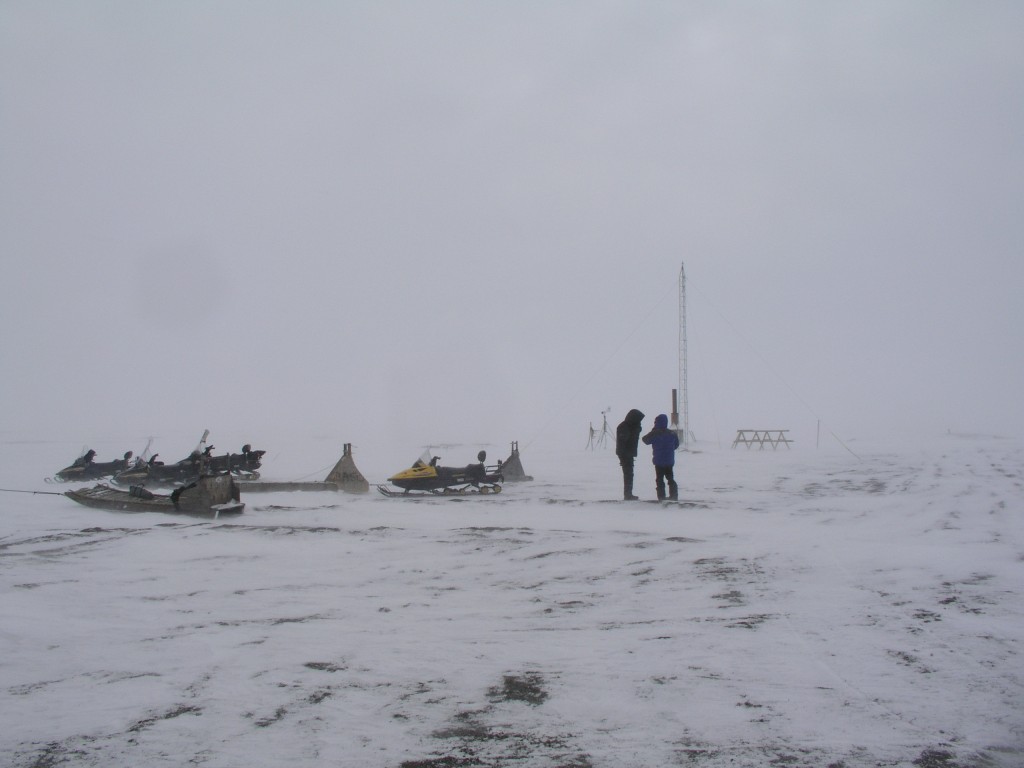
At Point Barrow, the northernmost point in the USA, a whole village was lost to erosion (Pic: I.Quaile)
Sitting in my office on the banks of the river Rhine, I am trying to imagine what would happen if the fast-flowing river was eating into the river bank at an average rate of 19 metres per year. It would not belong before our broadcasting headquarters, the UN campus tower and the multi-story Posttower building collapsed, with devastating consequences.
Fortunately, Bonn is not built on permafrost, so we don’t have that particular concern.
Record erosion on riverbank
The record erosion German scientists have been measuring in Alaska probably hasn’t been making the headlines because it is happening in a very sparsely populated area, where no homes or important structures are endangered.
Nevertheless, it certainly provides plenty of food for thought, says permafrost scientist Jens Strauss from the Potsdam-based research unit of the Alfred Wegener Institute for Polar and Marine Research (AWI). He and an international team have measured riverbank, erosion rates which exceed all previous records along the Itkillik River in northern Alaska. In a study published in the journal Geomorphology, the researchers report that the river is eating into the bank at 19 metres per year in a stretch of land where the ground contains a particularly large quantity of ice.
“These results demonstrate that permafrost thawing is not exclusively a slow process, but that its consequences can be felt immediately”, says Strauss.
With colleagues from the USA, Canada and Russia, he investigated the river at a point where it cuts through a plateau, where the sub-surface consists to 80 percent of pure ice and to 20 percent of frozen sediment. In the past, the ground ice, which is between 13,000 and 50,000 years old, stabilized the riverbank zone. The scientists, who have been observing the location for several years, demonstrated that the stabilization mechanisms fail if two factors coincide. That happens when the river carries flowing water over an extended period, and where the riverbank consists of steep cliff, which has a front facing south, and is thus exposed to a lot of direct sunlight.
Minus 12C average no safeguard
The warmer water thaws the permafrost and transports the falling material away, and in spite of a mean annual temperature of minus twelve degrees Celsius, summer sunlight makes it warm enough to send lumps of ice and mud flowing down the slope, according to Michail Kanevskixy from the University of Alaska Fairbanks, lead author of the study.
Overall, between 2007 and 2011, the cliff – which is 700 metres long and 35 metres high – retreated up to 100 metres, resulting in the loss of 31,000 square metres of land area. That is a large area, around 4.3 football fields, the scientists calculate.
In August 2007, they also witnessed how fissures formed within a few days, up to 100 metres long and 13 metres deep.
“Such failures follow a defined pattern”, says Jens Strauss. “First, the river begins to thaw the cliff and scours an overhang at the base. From here, fissures form in the soil following the large ice columns. The block then disconnects from the cliff, piece by piece, and collapses”.
Infrastructure under threat
Although these spectacular events happened far from populated areas and infrastructure, the magnitude of the erosion gives cause for much concern, given the rate at which temperatures are increasing in the Arctic. The scientists want their information to be used in the planning of new settlements, power routes and transport links. They also stress that the erosion impairs water quality on the rivers, which are often used for drinking water.
But what about those areas of the High North where there are settlements and key infrastructure? Russia is starting to get very worried about the effects of increasing permafrost erosion.
Last month the country’s Minister of Natural Resources, Sergey Donsjkoy, expressed grave concern. The Independent Barents Observer quoted the Minister as saying, in an interview with RIA Novosti, he feared the thawing permafrost would undermine the stability of Arctic infrastructure and increase the likelihood of dangerous phenomena like sinkholes. Russia has important oil and gas installations in Arctic regions. Clearly, any damage would have considerable economic implications. There are also whole cities built on permafrost in the Russian north.
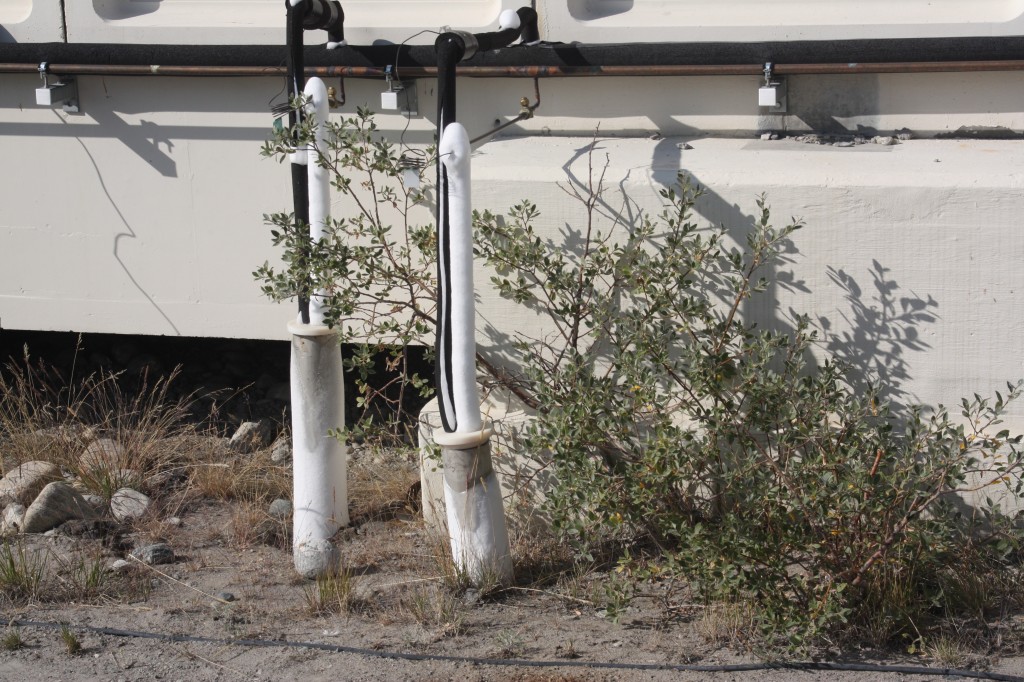
System to cool the foundations of a building on permafrost in Kangerlussuaq, Greenland (pic: I.Quaile)
High time to adapt
In 2014, I interviewed Hugues Lantuit, a coastal permafrost geomorphologist with the Alfred Wegener Institute for Polar and Marine Research, about an integrated database on permafrost temperature being set up as an EU project. He told me it would be very hard to halt this permafrost thaw, and stressed that permafrost underlies 44 percent of the land part of the northern hemisphere.
“The air temperature is warming in the Arctic, and we need to build and adapt infrastructure to these changing conditions. It’s very hard, because permafrost is frozen ground. It contains ice, and sometimes this ice is not distributed evenly under the surface. It’s very hard to predict where it’s going to be, and thus where the impact will be as the permafrost warms and thaws”.
I remember being shocked to see that people in Greenland were having to use refrigeration to keep the foundations of their buildings on permafrost stable. The scale of the problem is clearly much greater in cities like Yakutsk.
Then, of course comes the feedback problem, when thawing permafrost releases the organic carbon stored within it. Let me give the last word to Hugues Lantuit:
“This is a major issue, because it contains a lot of what we call organic carbon, and that is stored in the upper part of permafrost. And if that warms, the carbon is made available to microorganisms that convert it back to carbon dioxide and methane. And we estimate right now that there is twice as much organic carbon in permafrost as there is in the atmosphere. So you can see the scale of the potential impact of warming in the Arctic.”




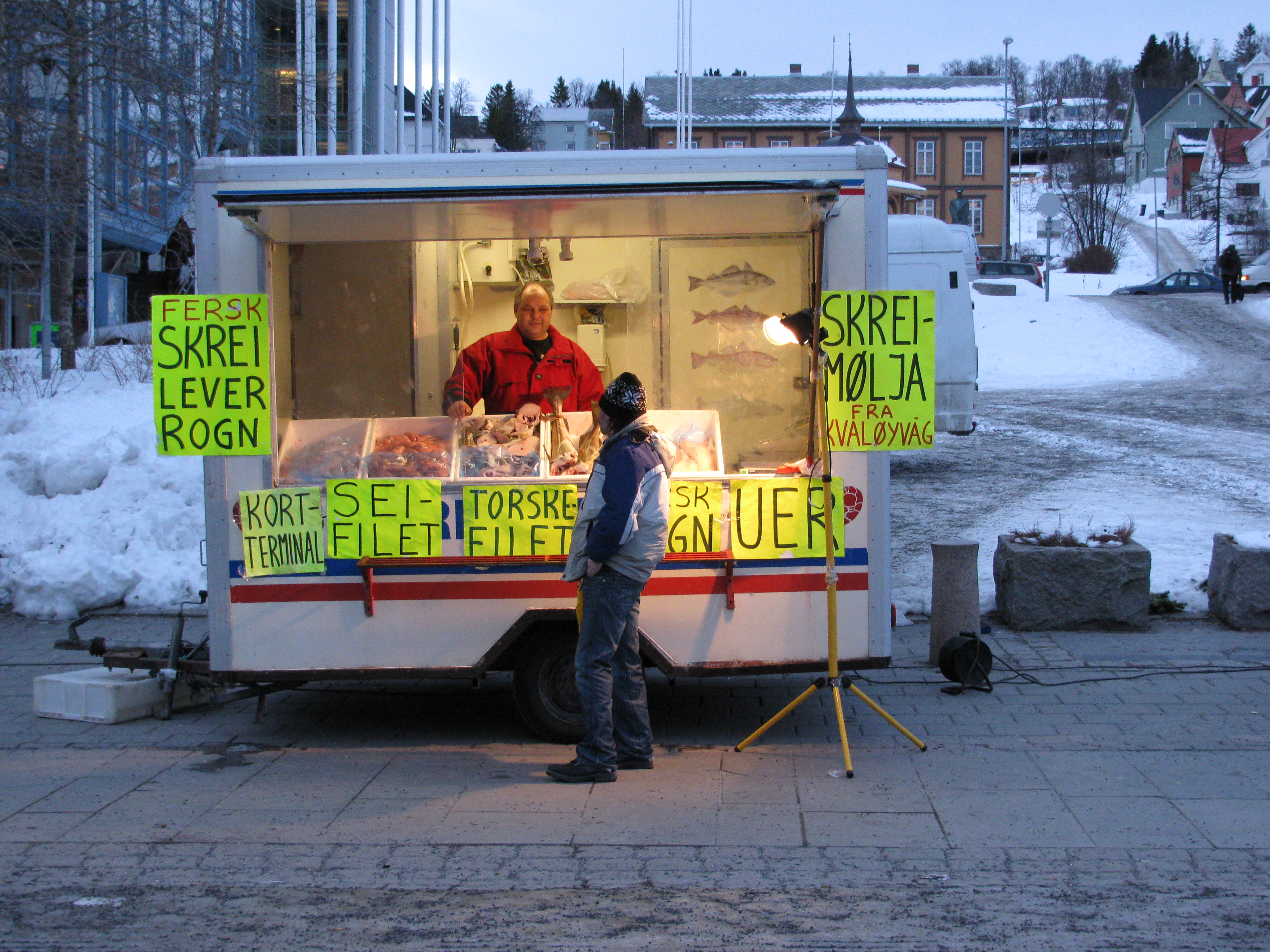
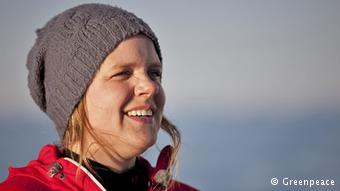
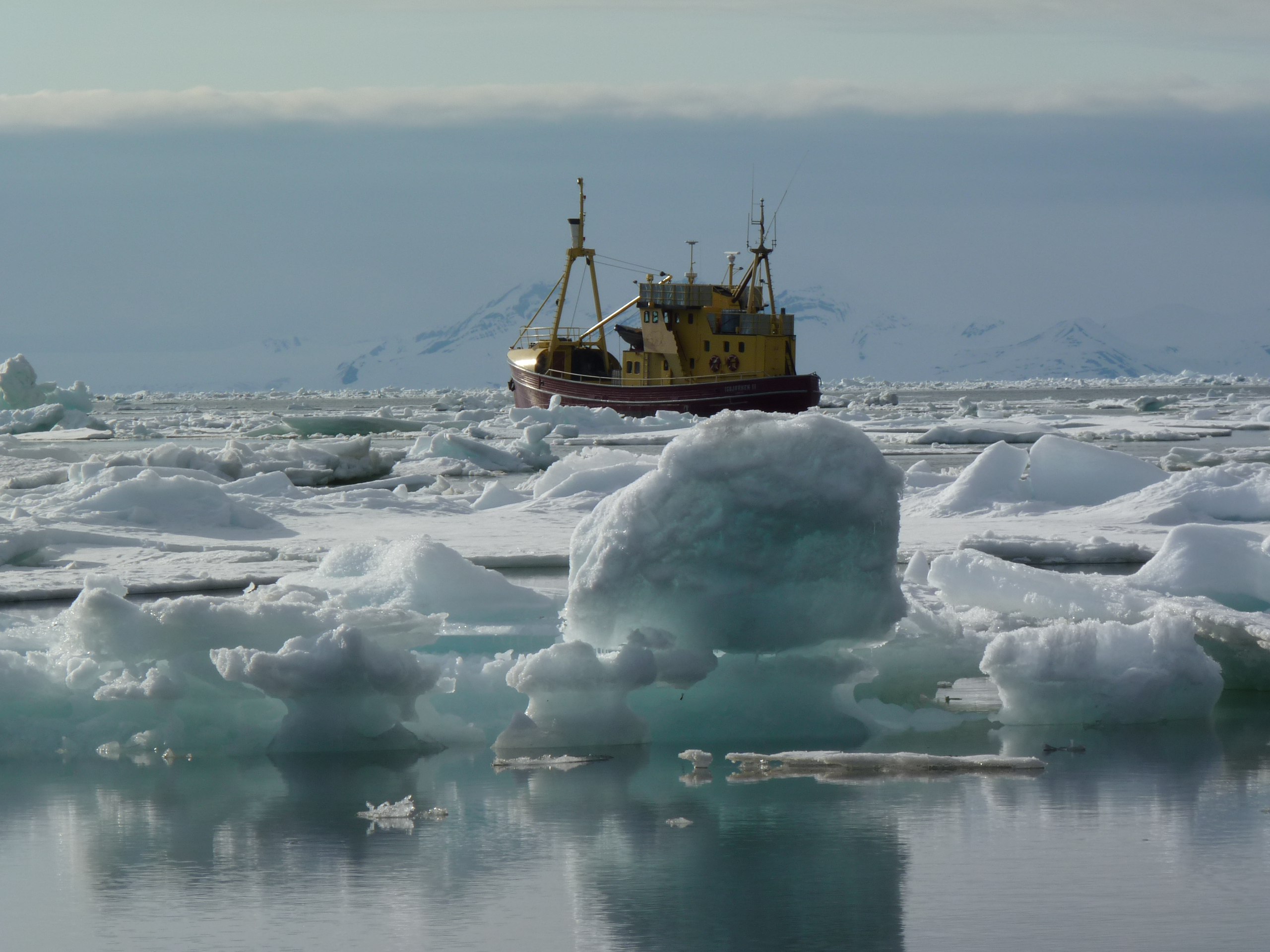

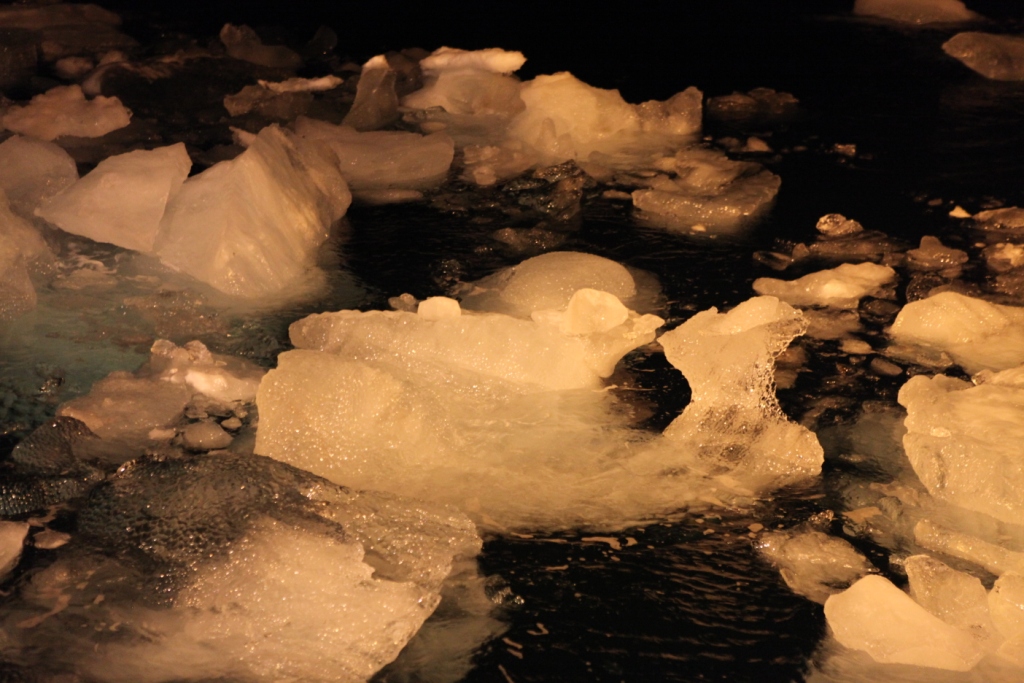
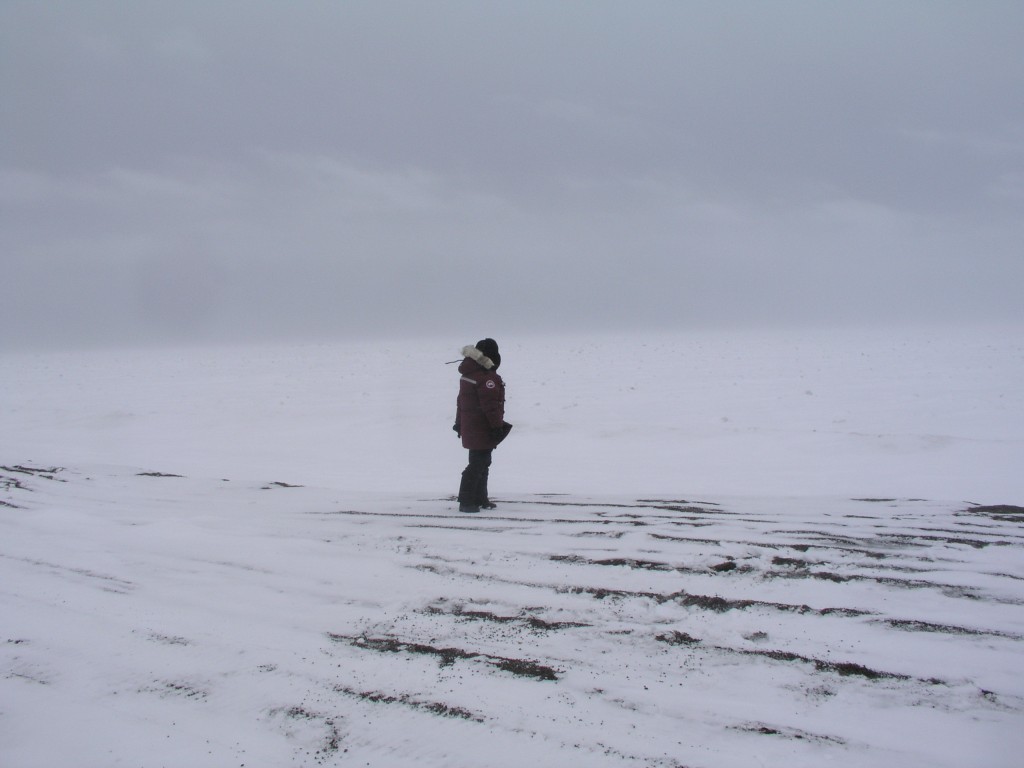
















Feedback